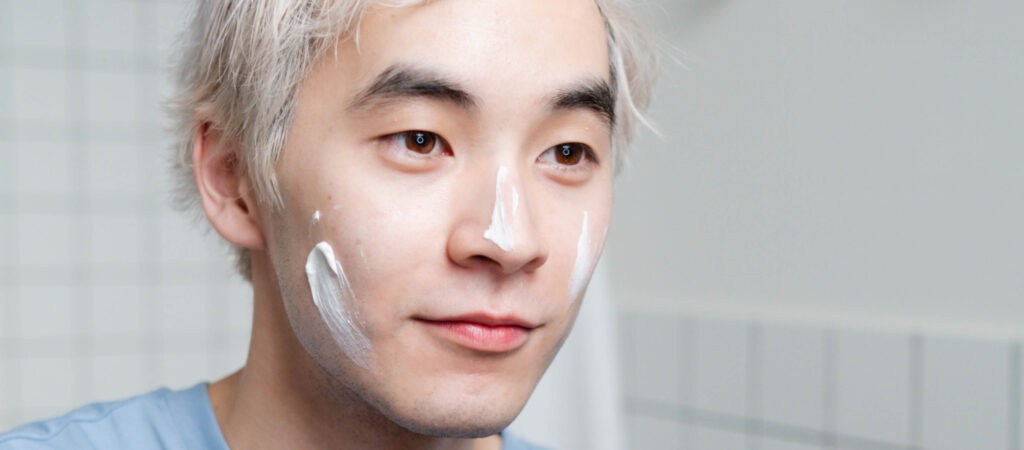How to Prevent Wrinkles

Medically reviewed by Joni Gunzburger, MSN, FNP-C on November 10, 2022
As you get older, you may start to notice wrinkles at the corner of your eyes or mouth. Your eyes do not deceive you: forehead wrinkles, neck wrinkles, and other creases are all signs of aging skin. As your skin ages, it has less collagen production, meaning it’s less elastic and more prone to sagging. Your skin cells also produce fewer natural oils as you age, which can lead to dry skin that further highlights wrinkles.
Don’t worry! Whether you have premature aging from sun damage or are just going through a natural decrease in collagen production, there are anti-aging treatments available as well as ways to prevent wrinkles. Treatments like vitamin C, tretinoin, collagen fillers, and more can all help to reduce skin aging. And preventive steps, like avoiding sun exposure, can keep your skin from aging prematurely as well as reduce your risk of skin cancer.
Need more tips on how to prevent wrinkle formation and skin aging? We’ve got the lowdown on how to boost collagen production and keep you looking young for years to come.
Nurx offers prescription treatment for acne, anti aging, melasma, rosacea, and eyelash growth.
What Causes Wrinkles in Your Skin?
The main cause of wrinkles is your skin aging. During the aging process, your skin loses elasticity and fullness because you stop producing collagen. Skin also becomes thinner and dryer. All of these combined can cause skin wrinkles to form.
However, activities like smoking, making repeated facial expressions, or getting too much sun exposure can also cause premature wrinkles if you aren’t careful. For example, frowning a lot might cause you to develop forehead wrinkles faster.
What Exactly Are Wrinkles?
Wrinkles are a type of crease or line that forms in your skin. Usually, wrinkling is most noticeable on the face, but you may also see them in other areas, such as your neck and arms.
There are a few different types of wrinkles you might see throughout the aging process. Forehead lines and worry lines involve the forehead, while bunnies and crow’s feet are around the eye. Laugh lines, lip lines, and marionette lines surround the mouth and chin.
When Do People Begin to Notice Wrinkles?
Fine line wrinkles are the start of wrinkles, and they usually begin showing up in your 20s. Scientists define fine wrinkles as wrinkles less than 1 mm in width and depth. Eventually, these fine lines may turn into deep wrinkles, which are deeper set and more noticeable.
How Does Skin Type and Skin Location Affect the Development of Wrinkles?
Unfortunately, people with both dry and oily skin both develop wrinkling as part of the aging process. However, they may get wrinkles in different areas.
Because people with oily skin often have larger pores and thicker skin, they usually don’t get crinkly fine lines in the forehead. However, they’re more prone to deeper lines in the lower half of the face. It’s the opposite for people with dryer skin, who may find that the decrease in collagen production makes their forehead wrinkles stand out more.
If it makes you feel better, it looks like crow’s feet in the eye area don’t discriminate — both skin types seem to develop them equally.
The good news is that with a solid anti-aging skin health routine recommended by a medical professional, many people can stave off the signs of aging. For example, using hyaluronic acid and tretinoin together may improve skin health and keep your skin firmer and plumper for longer.
Factors That Can Affect Your Skin and Wrinkles
There are a ton of factors that can affect the timeline of aging skin. If your goal is to fight off the aging process, consider diet, sun exposure, and drinking and smoking habits. These are all extrinsic aging factors that you can change. Intrinsic aging factors, on the other hand, are a natural and inevitable decline of skin health that’s just a part of getting older.
How Can Your Diet Affect Your Skin and Wrinkles?
Eating healthy isn’t just about your overall well-being — it’s also crucial for preventing premature aging of the skin. Overall, the best diet for skin health includes plenty of vitamins, minerals, and antioxidants. To get these nutrients, you should eat a lot of fruit, vegetables, and healthy fats. These foods are linked to fewer wrinkles and less age-related dry skin.
But what foods should you avoid to prevent fine lines and wrinkles? Deep-fried foods, sugary treats, and foods high in saturated fats can all be bad for your skin.
How Can Sun Exposure Affect Wrinkles?
Unfortunately, sun exposure is a major problem when it comes to skin aging. When your skin cells are exposed to too much UV light, they become damaged and die prematurely.
And if you get burned? This reduces the skin’s elasticity and makes it more prone to wrinkling. Excess sun can also cause the formation of free radicals, which are small compounds that damage elastin fibers in the skin.
If you’ve had a lot of sun exposure in your life, you’re the perfect candidate for anti-aging services.
How Can Habits Like Smoking or Drinking Affect Wrinkles?
Smoking and drinking are double whammies when it comes to aging skin. One study found that smoking increased the severity of forehead wrinkles like crow’s feet, under eye puffiness, nasolabial folds (between your nose and corner of your mouth), and perioral lines (surrounding the mouth). Heavy alcohol use, on the other hand, contributed more to upper facial lines and midface volume loss.
Moral of the story? Both of these habits aren’t great for skin aging.
How to Reduce Wrinkles in Your Skin
Now that you know more about wrinkles, it’s time to get to the juicy stuff — how to prevent wrinkles. Here are some tips on how to create a skin care routine that should slow the aging process.
What Sort of Treatments Can You Utilize to Reduce Wrinkles?
Probably the most effective way to battle wrinkles is by using prescription-strength topical creams. For example, topical retinoids like tretinoin can reduce fine lines and wrinkles by stimulating the production of new skin cells, promoting collagen production, and decreasing the body’s reabsorption of collagen. As a bonus, tretinoin can also even out skin texture and improve your overall skin health.
You may also be able to find a specific eye cream to tackle your eye wrinkles. Because eye skin is so thin and sensitive, these creams are slightly gentler.
While the above option is a home-based solution, many people consider more clinic-based interventions like laser resurfacing. This is when a laser beam destroys the outer layer of skin, stimulating the production of collagen to heal everything. You might also try microdermabrasion, which uses a special applicator with an abrasive surface to gently remove the top layer of skin.
What Are Wrinkle-Reducing Treatments You Should Avoid?
While chemical peels aren’t necessarily bad for your skin, they can be harsh. They remove the top layer of dead skin cells, which stimulates the production of new skin cells to take their place. While you’ll see great results, there is also the chance of severe side effects, such as redness, scabbing, swelling, or even scarring.
You may also want to think twice before utilizing dermal fillers. They’re an injectable solution that sits underneath the skin to improve plumpness and smooth out your face. While the results are great, they’re only temporary. Once the fillers dissolve, your face will look just like it did before. Unless you’re willing to commit to continual filler treatments, you might want to avoid them.
How Long Can It Take to See Results From Wrinkle Treatments?
If you’re using a procedure like dermal fillers to treat your skin concern, the good news is that you should see results nearly immediately. However, the other treatment methods take a bit longer. For example, retinoids can take three to six months of use before you start seeing changes.
A chemical peel works a bit faster, as your skin should start healing in about two weeks. However, during those first two weeks, your skin will likely look quite red and inflamed. Other treatments, like microdermabrasion, usually take about two to three weeks for results.
Preventing Premature Skin Aging and Wrinkles
Hopefully the above skin care tips should help keep you wrinkle-free for some time. But if you’re looking for other ways to prevent premature skin aging, consider lifestyle changes. These are all things you can do to keep your skin looking youthful — and as a bonus, you may even see healthier skin overall!
What Are the Differences Between Normal Skin Aging and Premature Skin Aging?
Generally, the signs of normal skin aging and premature skin aging are the same — it’s when you get them that counts. Most people shouldn’t be seeing age spots (remember to have these checked for skin cancer), severe wrinkles, a loss of skin tone, or sagging before age 30. However, if you’re only in your 20s, you may be suffering from premature skin aging.
What Habits Can You Begin Incorporating Into Your Daily Routine to Prevent Premature Skin Aging and Wrinkles?
If you’re concerned about premature aging, try incorporating vitamin C into your daily skin care routine. It helps to brighten and tone the skin so you look fresh-faced even on a bad day. While topical vitamin C is great, eating vitamin C (along with all your other vitamins) is even better! Not only will a well-balanced diet improve your skin, but it might even help your overall health and well-being.
One final tip: don’t forget the sunscreen! Always apply an SPF before heading out the door, even if you’ll only be in the sun for a few minutes.
If you’d like to be a little more proactive about your skin concerns, you can always consider prescription anti-aging treatment. The cost is more affordable than you might think!
How Much Water Should You Drink Per Day to Keep Your Skin Hydrated and Looking Youthful?
The science is a bit mixed on whether drinking water can help with premature skin aging or not. One study seemed to find that drinking 9.5 cups of water a day did increase skin thickness in some people — but only in those who didn’t drink a lot of water already.
Either way, it’s a good idea to stick to around 8 cups of water a day. Water keeps you hydrated, and your outer layer of skin needs water to stay elastic and soft.
If you’d like to know what your options for treating fine lines and wrinkles are, you can learn more by filling out a skin questionnaire here.







